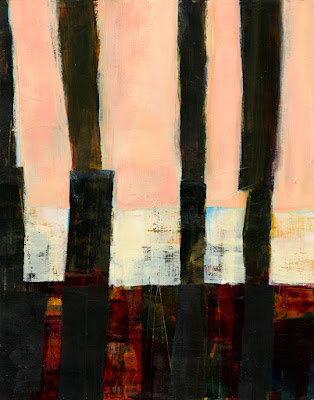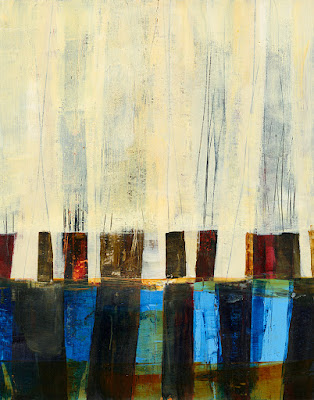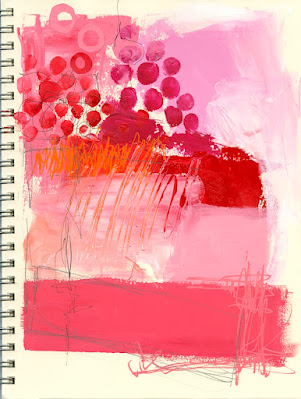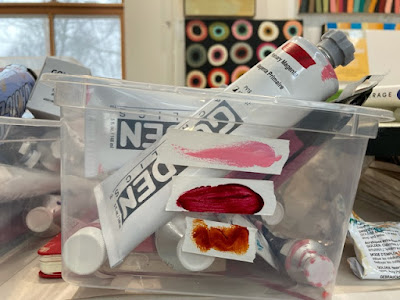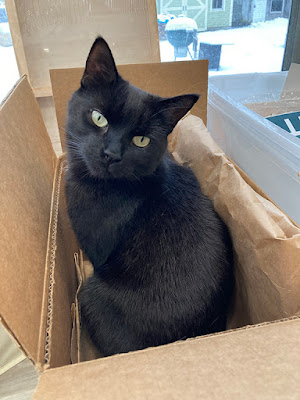"When you finish a series..." "When I work in series..." "Oh, maybe I will do a series..."
Do you ever not work in series? What is a series? How do you approach a series? Is working in series something special? Is it any different from just working? Do you plan to work in series? Do you plan the series? Often I wonder how other artists think of series when they treat it as something special, something separate from 'regular' work, or as if it is a finished-product goal. To me, the series is the unit of art making. I always approach my work as if I'm doing one of a hundred pieces with similar parameters, even if I stop at one. I have an idea, and I explore the idea over the course of a bunch of pieces. To me the series is the process of working through an idea.
Sometimes a series, or an idea, is pretty well defined, like this exploration of concentric circle/stripes:
 |
| Moving Target #?, 36"x36", in process (partial) |
Here is another group of "Shape Studies" that I did in a continuous time-frame (maybe not one session, but several successive sessions). The parameters for these are a little looser.
 | ||
| These are each 9"x9" on paper |
And more "Shape Meditations" I did at a later date, but I would consider them part of the same series, in that they constitute a similar exploration. These are all 9"x12" on Bristol.
In the above two groups I am putting together shapes that are different from each other in several respects - size, color, value, pattern/texture - and seeing what kind of interesting negative space I can create.
I would love to hear your thoughts on working in series and what it means to you. Please comment. I check comments daily for 'moderation'. I need to do this because of a plethora of bot-generated spam. Thanks for visiting!














